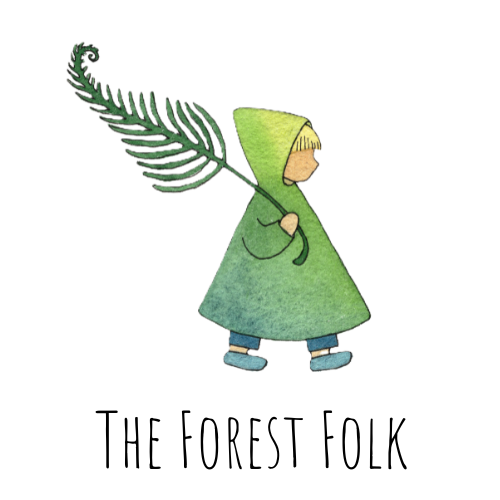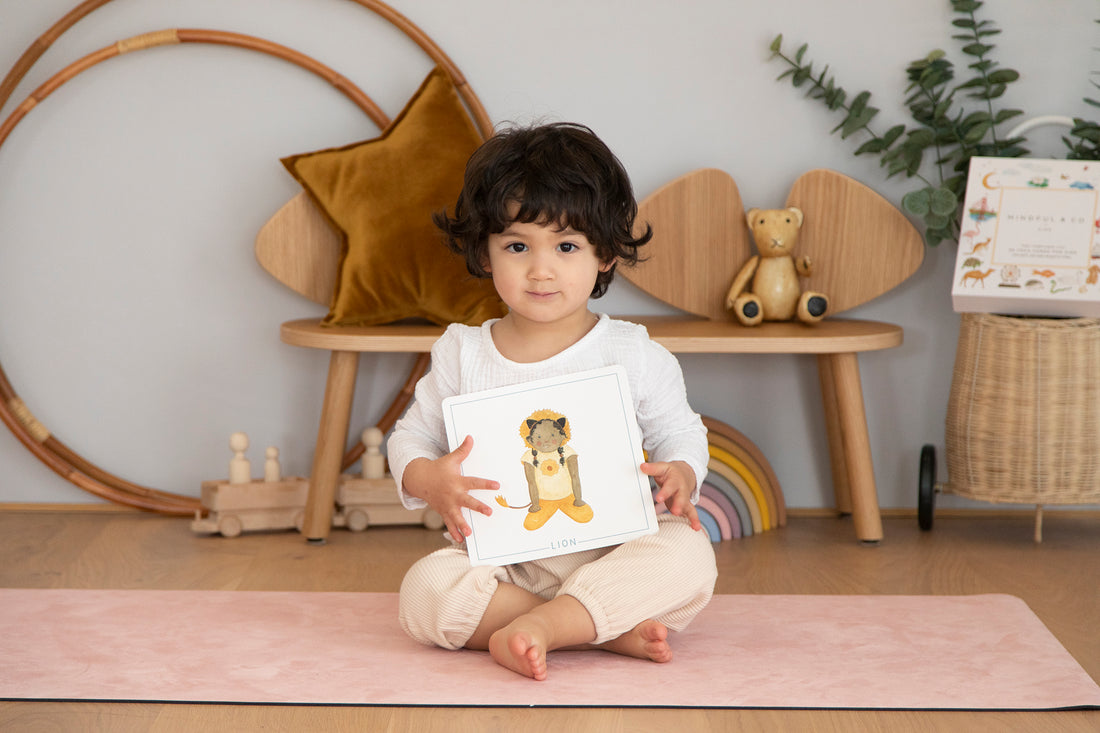Have you ever considered introducing your child to yoga? It can be such a fun and healthy activity that you can do together or individually.
Introducing children to the practice of yoga holds a myriad of benefits for both the body and the mind. Yoga is known to improve flexibility, strength and coordination, as well as helping to manage stress, enhance concentration and cultivate a sense of inner peace.
When my daughter was about 3 she spontaneously started joining in with my own yoga practice. She would copy the poses I was doing and because she showed an interest we ended up loaning a kids yoga book from the library and she started copying the poses from the images on her own.
When my sister and I started this business we came across these beautiful kids yoga products from Mindful & Co kids and they immediately resonated with me. Since then my daughters, and our family's love of yoga has been reignited. In particular we have been loving the flash cards, just having them laying around seems to invite the children into simple poses, which often gifts us with beautiful moments of calm and intention.
In this post we will explore fun and engaging ways to introduce your kids to the practice of yoga. By integrating yoga into their routine, we can help our children develop healthy habits and emotional resilience that will benefit them throughout their lives.
If you would like to download the instructions for the yoga game, routine, and meditation, you can access the PDF here.
1.MIRROR ME YOGA
How to Start:
Have your child stand opposite you and make eye contact with them. If you’re working with more than two children, demonstrate this game with one child first, and then pair everyone up to play together.
It’s a brilliant way to improve body awareness and proprioception, as well as empathy and observation skills.
Note: You can use our yoga flash cards to familiarise yourself with at least 5 postures before introducing this game.
How to Play:
One of you is the leader and the other is the mirror, copying the leader’s every move.
Move into a yoga pose - move slowly so that your child can mimic what you do. The idea is that you start to move in unison as they match their movements as closely as they can to yours.
Hold each pose for as long as feels appropriate before slowly shifting into the next one.
The leader tries 5 yoga poses before you switch so that the mirror has a chance to lead.
2.Visual Cues
Visual aids can capture children’s attention more effectively than verbal instructions and fosters better comprehension and retention. In the context of learning yoga, flash cards or books can provide clear, step-by-step illustrations of poses, making it easier for children to understand and mimic the movements.
Lay out some images of yoga poses for your child to follow, or allow your child to choose some poses from the pile/book. The flash cards from mindful & co are perfect for self led yoga, otherwise printed images from online or a book work really well to. When my daughter first started showing an interest in yoga, we loaned a book from the library and she copied the poses from the images.

3. Simple Morning Routine
This simple yoga routine is a great way to start the day, especially before heading to preschool or school. It is great for warming the muscles, getting the blood moving, and the heart centred and energised. We want to wake their body up and trigger the release of dopamines in the brain, helping them to start off on a positive note.
1.Mountain
This is a great pose to ground your little one for the day ahead.
2.Cobra
Stretching their back, which is especially helpful if they will be spending the day sitting down at a table.
3.Camel
This helps to practice deep, thoughtful open-mouthed breathing.
4.Dog
Dog pose helps to wake up the organs and builds wrist strength.

4. HEART MEDITATION
Start this meditation standing up. Stand tall with your feet flat on the ground so you feel steady and strong.
And then start to jump up and down — keep going for 1 minute! This will make your heartbeat faster and harder.
When the minute is over it’s time to sit down and close your eyes.
Notice your heartbeat. Concentrate on how it feels. Feel the power of your heart beating in your chest. Perhaps it makes you feel energetic and excited, or strong and confident?
What else do you notice about your body now? There’s no right or wrong. Meditating is all about noticing how things feel.
And then notice your breath. To start with your breath might be fast and shallow because you’ve been jumping up and down, and your heart and lungs are expanding and sending energy around your body.
When you feel ready, start to take a few deeper breaths. Slowing it down.
Notice the way that your breath and your heartbeat slow down together.
Gradually they become slower.
And maybe as your breath and your heartbeat slow down, you start to feel different — you might feel calmer.
Let yourself feel calm and content. There’s nothing you need to do in this moment; sit peacefully and quietly. Your heart is calm, and your breath is calm, and you are calm.
And then rub your hands together quickly until they’re warm. Place your hands over your eyes, and open your eyes. And then when your eyes have adjusted to the change in light, you can take your hands away.


